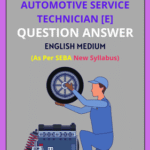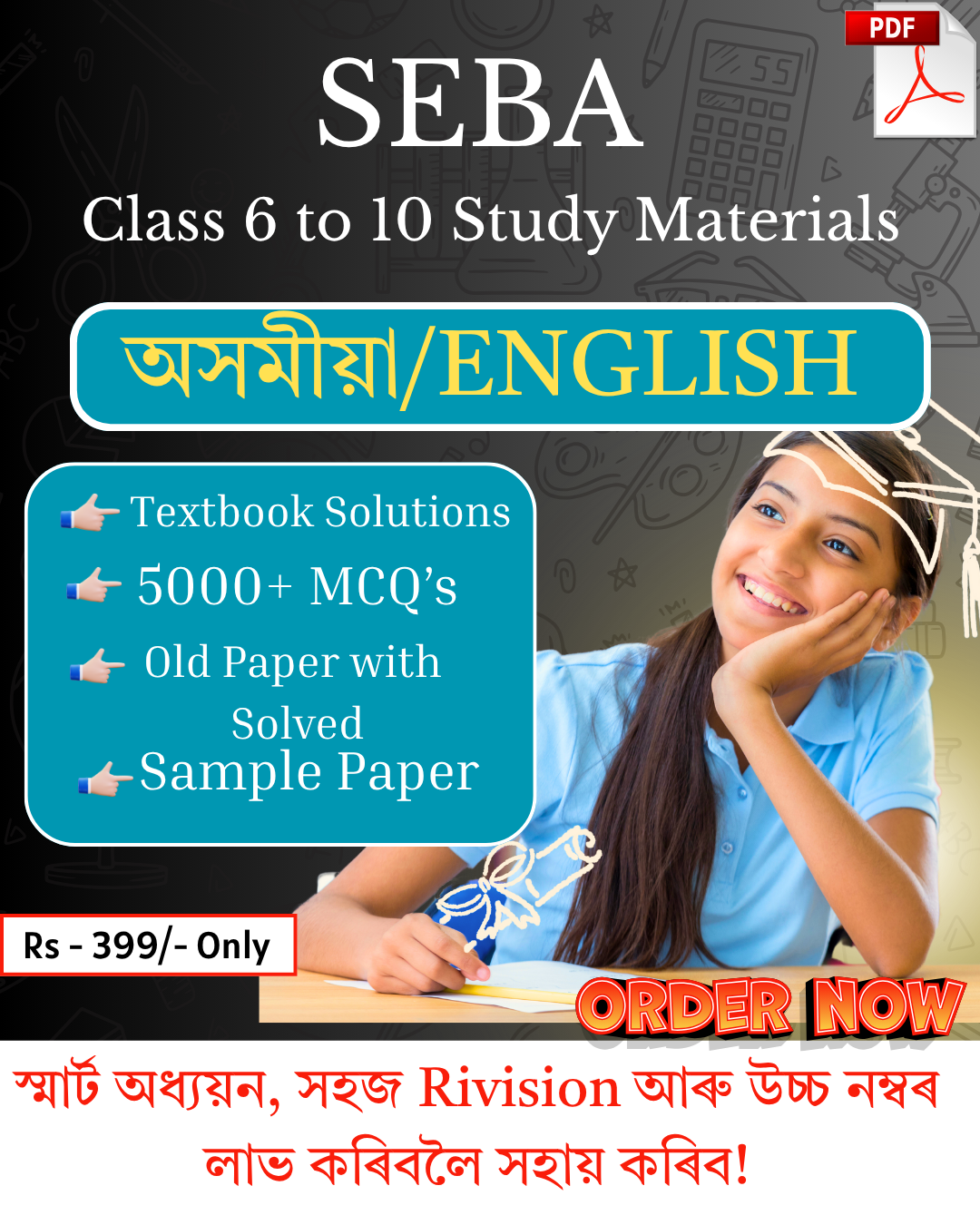Class 10 Automotive Service Technician Chapter 4 Assist in Vehicle Maintenance Solutions English Medium to each chapter is provided in the list so that you can easily browse through different chapters Class 10 Automotive Service Technician Chapter 4 Assist in Vehicle Maintenance Question Answer and select need one. Class 10 Automotive Service Technician Chapter 4 Assist in Vehicle Maintenance Solutions Download PDF. SEBA Class 10 Elective Automotive Service Technician Texbook Solutions English Medium.
Class 10 Automotive Service Technician Chapter 4 Assist in Vehicle Maintenance
Also, you can read the NCERT book online in these sections Solutions by Expert Teachers as per Central Board of Secondary Education (CBSE) Book guidelines. SEBA Class 10 Elective Automotive Service Technician Textual Solutions in English are part of All Subject Solutions. Here we have given Class 10 Automotive Service Technician Chapter 4 Assist in Vehicle Maintenance Notes, SEBA Class 10 Elective Automotive Service Technician English Medium Textbook Solutions for All Chapters, You can practice these here.
Assist in Vehicle Maintenance
Chapter: 4
Unit 4.1 – About Four Wheeler Vehicle
Unit Objectives: At the end of this unit, participants will be able to know about:
1. Identify four wheeler aggregates and parts.
Ans: Four-wheeler aggregates refer to the major systems or assemblies that make up a vehicle.
The aggregates and their key parts are as follows:
(a) Engine (Power Generation):
(i) Air Induction.
(ii) Fuel system.
(iii) Ignition system.
(iv) Exhaust system.
(v) Lubrication system.
(b) Driveline:
(i) Clutch.
(ii) Gearbox/Transmission.
(iii) Transfer case.
(iv) Differential.
(v) Driveshaft.
(vi) Wheels and Tyres.
(c) Running Gear:
(i) Suspension.
(ii) Steering.
(d) Brake System:
(i) Drum Brake, Disc Brake and Parking Brake.
(e) Electrical, Comfort, Convenience and Safety:
(i) Horn, lighting, wiper, instrument cluster, controls.
(ii) HVAC, seating, power window, central locking, etc.
(iii) SRS Airbag, ABS etc.
2. Describe functioning of four wheeler vehicle, its aggregates and parts.
Ans: Automobiles are made up of several components, assemblies and systems. The growing auto industry has given rise to a growing auto component manufacturing industry also. India has now become outsourcing hub for manufacturing of various automobile components.
The auto components industry is predominantly divided into five segments:
(i) Engine parts.
(ii) Drive line – Transmission.
(iii) Steering, Suspension & Brake Parts.
(iv) Electrical Parts.
( v) Body and chassis.
Major Systems and Subsystems in an Automobile:
(a) Engine (Power Generation):
(i) Air Induction:
(ii) Fuel system.
(iii) Ignition system.
(iv) Exhaust system.
(v) Lubrication system.
(b) Driveline:
(i) Clutch.
(ii) Gearbox/Transmission.
(iii) Transfer case.
(iv) Differential.
(v) Driveshaft.
(vi) Wheels and Tyres.
(c) Running Gear:
(i) Suspension.
(ii) Steering.
(d) Brake System:
(i) Drum Brake, Disc Brake and Parking Brake.
(e) Electrical, Comfort, Convenience and Safety:
(i) Horn, lighting, wiper, instrument cluster, controls.
(ii) HVAC, seating, power window, central locking, etc.
(iii) SRS Airbag, ABS etc.
| Unit 4.2 – Tools and Measuring Instruments Required |
Unit Objectives: At the end of this unit, participants will be able to know about:
1. List tools and measuring instruments required for servicing and repairing work.
Ans: The tools and measuring instruments required for servicing and repairing work can be classified into the following categories:
(i) Manually Used Tools:
(a) Wrenches.
(b) Screwdrivers.
(c) Pliers.
(d) Socket Set.
(e) Extension Bar Set.
(f) Torque Wrench.
(g) Vice.
(h) Hacksaw.
(ii) Electrically Operated Tools:
(a) Drill.
(b) Drill Bits.
(c) Reamers.
(d) Soldering Iron.
(e) Soldering Gun.
(iii) Pneumatically operated tools:
(a) Impact Wrench.
(iv) Special service tools:
(a) Bearing Puller.
(b) Clutch Holder.
(c) Tappet Adjuster.
2. Demonstrate use of tools and measuring instruments required.
Ans: The use of various tools and measuring instruments is essential for accurate and safe vehicle maintenance.
Below is a demonstration of their typical use in a workshop setting:
(i) Manually Used Tools:
(a) Wrenches: The objective of a wrench is to tighten or loosen the bolt or nut. Based on the fastener’s design and size, appropriate wrench needs to be selected. It can also depend on how difficult the fastener is to reach.
(b) Screwdriver: Screwdriver is manly used for tightening or losing screws by inserting it into the screw head. It helps in amplifying user’s hand motion to its tip.
(c) Pliers: The primary purpose of the tool known as pliers is to grip objects firmly. The objects can then be turned, bent, or otherwise manipulated.
(d) Socket-Set: Socket set is having a number of different size detachable sockets used with socket wrench. It is basically a type of wrench having facility to attach a required size of socket at the end to turn a fastener.
(e) Extension bar-set: It has a number of bars in sets. Use extension bars to prevent over tightening of lug nuts, distortion of wheels, drums and rotors. It helps to reach the bolt that is out of reach, so it makes it easier for mechanics to take off the part deep in the engine bay.
(f) Torque-Wrench: It is a tool which is used to exactly apply specific torque to a fastener like nut or bolts. Basically it is a socket wrench having special internal mechanism.
(g) Vice: A vice is an apparatus used to hold an object so that required work can be carried out on object. Vice consists of parallel jaws. One of the jaws is fixed on the structure whereas another one is movable having a liver to move the jaws. Vices can be used to hold metal in place to be cut or modified.
(h) Hacksaw: A hacksaw is a metal-framed saw used primarily for cutting plastic and metal pipes and other small household materials. It is basically a U shaped bended frame which can hold a thin wide metallic blade between its clip having a handle at one end made up of plastic or wood.
(ii) Electrically Operated Tools: These tools are operated by electrical power.
(a) Drill: It is a tool which is getting attached with cutting tool or driving tool. It is basically used for boring holes in various types of materials or also in fastening various materials by the use of fasteners using a drill bit or drive bit.
(b) Drill-Bits: Drill bits are cutting tools used to remove material to create holes, almost always of circular cross-section. Drill bits are available in various shapes which can be used to create different types of hole in various types of materials. For making a hole, drill bits has to be attached with drill machine. Drill machine provide power to drill bits so that it can cut through the work piece by rotation. Upper end of the drill which is also called shank is grasped in the chuck.
(c) Reamers: It is a type of rotating cutting tool used in metal work. It is designed to enlarge pre-existing hole dimension or further deepening by a small amount but with very high level of accuracy. Various types of reamers are available based on material used, style of flute styles and size.
(d) Soldering-Iron: Soldering iron is a handheld tool used for soldering purpose. It melts the solder by applying heat so that solder can flow inbetween joints of two work piece so that it can be joined.
(e) Soldering gun: Soldering gun is tool which work on electricity. It is used for metal soldering by using tin-based material so that strong mechanical bond with good electrical contact can be achieved. Shape of soldering gun is similar to the shape of pistol.
(iii) Pneumatically Operated Tools: These tools are operated by compresses air.
(a) Impact-Wrench: Impact wrench is also called by various names such as impact gun, air gun, rattle gun, torque gun etc. Impact wrench is a socket wrench power tool used to deliver high output torque with minimum effort by user as it stores the energy in rotating mass and deliver it suddenly to the output shaft.
(iv) Special Service Tools:
(a) Bearing puller: A bearing puller is a tool used to remove bearing sets from a rotating machine shaft or from a blind bearing hole. These tools are made of tool grade steel, so they are harder than the parts they are used on. They are usually hand-powered with a handle on the turn screw. Some bearing pullers are hydraulically powered, using a hydraulically powered piston to press against the end of the shaft the bearing is on.
(b) Clutch holder: Clutch holder is used to hold the inner clutch hub, which is necessary for removal and installation of the clutch hub and clutch basket of the vehicle. To use it place the jaws on the clutch hub so the ends fit into the square grooves where the drive plates (steel plates) would usually rest. Using the adjusting bolt on the back of the tool, adjust the tension so the tool can apply light pressure on the hub when clamped down. With the clutch hub held in place the center nut can be removed with the appropriate wrench.
(d) Tappet Adjuster The hand tool allows micro adjustment without disturbing the locknut which can be tightened when the correct clearance is achieved. Use a knurled handle to ensure a secure grip and 12mm wrench to hold the locknut socket while using square type driver to loosen or tighten the valve adjustment screw.
| Unit 4.3 – Maintenance of Four Wheeler Vehicle |
Unit Objectives: At the end of this unit, participants will be able to know about:
1. Apply basic maintenance techniques to ensure that the tools and equipment are functioning as per SOP.
Ans: Apply basic maintenance techniques to ensure that the tools and equipment are functioning as per SOP are:
(i) Ensure all workshop tools, equipment and workstations are adequately maintained by carrying out scheduled checks, calibration and timely repairs where necessary.
(ii) Ensure any malfunctions observed in tools and equipment are reported to the concerned persons.
(iii) Ensure equipment is accurately calibrated for optimal performance.
(iv) Store tools and equipment properly to prevent damage and deterioration.
2. Perform the process of routine service/maintenance as per standard operating procedures.
Ans: Perform the process of routine service/maintenance as per standard operating procedures are:
(i) Ensure OEM recommended procedure and checklist is followed for routine servicing.
(ii) In case of non-routine service or repair, confirm tasks to be carried out with superior.
(iii) Calibrate, align and adjust settings, alignment, pressures, tension, speeds and levels relevant to components and systems of four wheeler.
(iv) Ensure that in routine maintenance and service, the correct spare parts and appropriate grade of lubricants, coolant, oils and grease required have been obtained.
(v) Test equipment to ensure proper functioning and verify performance.
3. Perform servicing and repairing of four wheeler vehicle.
Ans: Perform servicing and repairing of four wheeler vehicle are:
(i) Assist the senior technician in identifying & diagnosis of the operational fault responsible for the root cause of the vehicle trouble.
(ii) Assist in taking necessary action post the root cause analysis to repair the vehicle.
(iii) Ensure all dismantled components (including mechanical and electrical aggregates) are cleaned and conditioned prior to reassembly.
(iv) Identify and change components requiring change due to continuous wear and tear.
(v) Ensure disposal of materials (including waste oil, scrap of failed parts/aggregates) in accordance with the organisation’s policies.
(vi) Perform engine tune-ups, transmission and differential checks, and suspension and steering inspections.
(vii) Identify issues using diagnostic tools, replace faulty parts, and troubleshoot electrical issues.
| Exercise |
Mark True or False:
1. Auto service technician is responsible for the routine servicing of four wheeler.
(a) True.
(b) False .
Ans: (a) True.
2. Good communication and interpersonal skills is required for the auto service technician.
(a) True.
(b) False.
Ans: (a) True.
3. Auto service technician should have a better understanding of social aspect for repairing the vehicle.
(a) True.
(b) False.
Ans: (b) False.
4. After collecting the vehicle customer’s personal belongings in the vehicle should be handover to service agency office.
(a) True.
(b) False.
Ans: (b) False.
5. Job card can be filled in absence of customer.
(a) True.
(b) False.
Ans: (b) False.
Fill in the Blanks:
6. During vehicle booking appointment is taken by the __________ from the customer for the service job.
(a) Service advisor.
(b) Workshop supervisor.
(c) Technician.
Ans: (a) Service advisor.
7. Vehicle receiving and job card opening process is done by ____________.
(a) Service advisor.
(b) Workshop supervisor.
(c) Technician.
Ans: (a) Service advisor.
8. Job allotment in the workshop is done by ___________.
(a) Service advisor.
(b) Workshop supervisor
(c) Technician.
Ans: (b) Workshop supervisor.
9. During repairing process if additional job has to be done on the vehicle, should be intimated to _____________.
(a) Service advisor.
(b) Workshop supervisor.
(c) Technician.
Ans: (a) Service advisor.
10. Final inspection of the vehicle before delivery is done by ____________.
(a) Service advisor.
(b) Workshop supervisor.
(c) Quality tester.
Ans: (c) Quality tester.
11. Service technician should carry out repair jobs as per ____________.
(a) Job card.
(b) Customer input.
(c) Advice from quality tester.
Ans: (a) Job card.
12. The job card has details of ___________.
(a) Customer.
(b) Vehicle.
(c) Instruction of service advisor.
Ans: (a) Customer and (b) Vehicle.
13. The primary function of the vehicle chassis is ___________.
(a) To carry the weight of the vehicle and its passengers.
(b) To carry the weight of vehicle.
(c) To carry weight of passengers.
Ans: (a) To carry the weight of the vehicle and its passengers.
14. Disc brakes consist of a _______ disc.
(a) Steel braking.
(b) Copper braking.
(c) Brass braking.
Ans: (a) Steel braking.
15. Disk brakes works on ___________
(a) Pneumatic pressure.
(b) Hydraulic pressure.
(c) Both.
Ans: (b) Hydraulic pressure.
16. Engine converts the __________ energy to mechanical energy.
(a) Chemical.
(b) kinetic.
(c) Thermal.
Ans: (a) Chemical.
17. Almost all automotive engines are using __________.
(a) Rotary engine.
(b) Reciprocating engine.
(c) Both.
Ans: (b) Reciprocating engine.
18. Describe the maintenance process of four wheeler.
Ans: The process of routine service/maintenance as per standard operating procedures involves:
(i) Ensure OEM recommended procedure and checklist is followed for routine servicing.
(ii) Check engine oil, coolant, brake fluid, and transmission fluid levels.
(iii) In case of non-routine service or repair, confirm tasks to be carried out with superior.
(iv) Ensure proper tire pressure for optimal performance and safety.
(v) Calibrate, align and adjust settings, alignment, pressures, tension, speeds and levels relevant to components.
(vi) Check battery terminals, cables, and charge level.
19. Describe the selection criteria of engine oil for a four wheeler.
Ans: The selection of oil depends on:
(i) Type of engine.
(ii) Operating temperature.
(iii) Viscosity of oil.
(iv) Quality of oil.
(v) Manufacturer’s recommendation.

Hi! my Name is Parimal Roy. I have completed my Bachelor’s degree in Philosophy (B.A.) from Silapathar General College. Currently, I am working as an HR Manager at Dev Library. It is a website that provides study materials for students from Class 3 to 12, including SCERT and NCERT notes. It also offers resources for BA, B.Com, B.Sc, and Computer Science, along with postgraduate notes. Besides study materials, the website has novels, eBooks, health and finance articles, biographies, quotes, and more.




